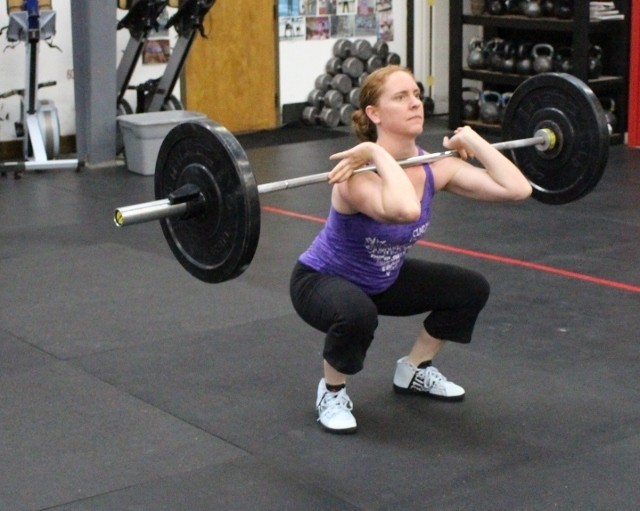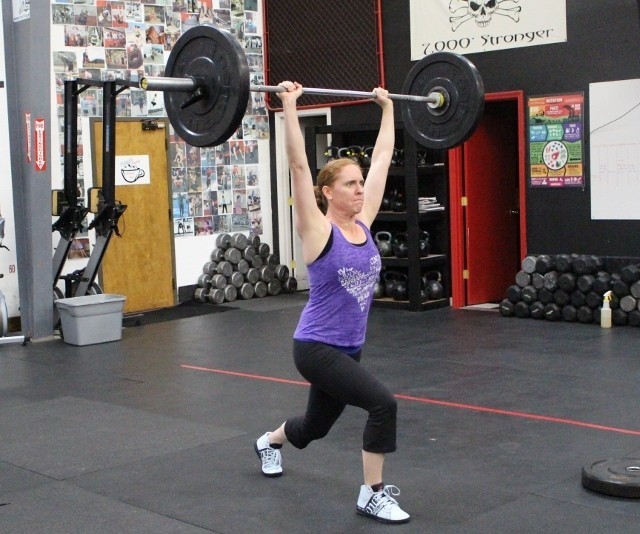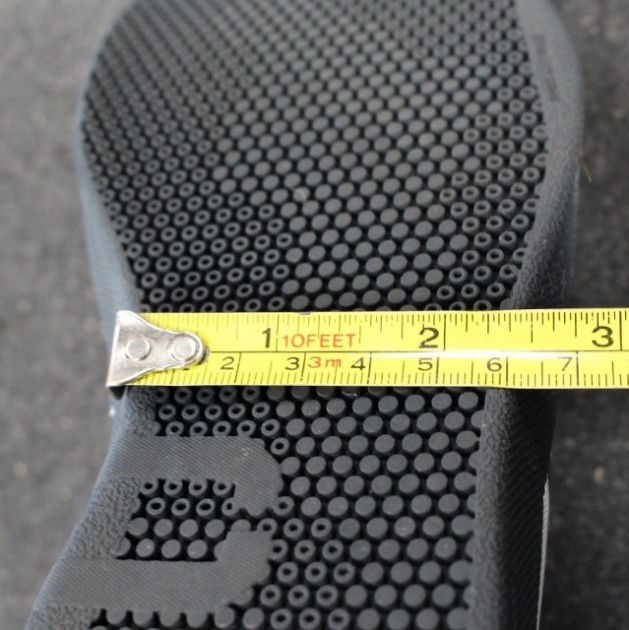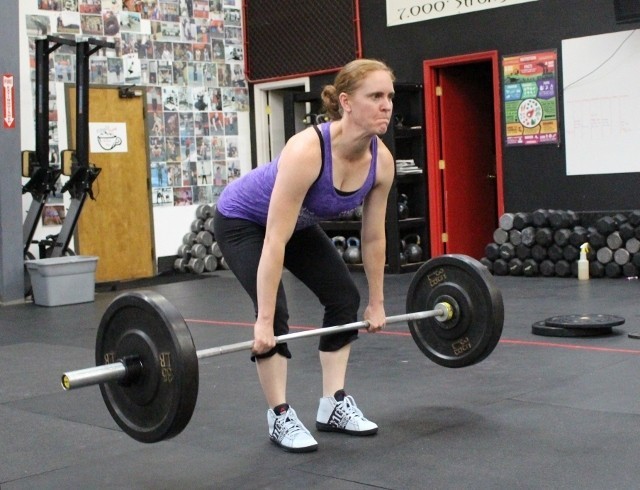Reebok Lite TR - Women's Review
Our Verdict
Our Analysis and Test Results
The Reebok Lite TR is a high top shoe designed primarily for lifting. It is available in a variety of colors and patterns as well as either synthetic mesh or suede uppers. It weighs 10 ounces (289 grams) and has a 4 mm heel to toe drop.
Weightlifting
This shoe was designed for lifting. However, the broad family of lifting movements has different requirements when it comes to footwear. For instance, squats and the Olympic lifts are not ideal in a high top shoe. A deep squat requires ankle flexibility which is limited with a high top. The lifts that these shoes are more suited for are deadlifts, shoulder presses and bench presses. A more useful shoe than this one for the lifting demands of CrossFit is the Nike Metcon 3. While the Reebok Lite TR has specialized uses, the Metcon 3 is a great choice as a general purpose lifting shoe.
Running
We put all of our review shoes through the exact same side-by-side comparison tests, even if the shoes were not really designed for each movement. One reviewer stated she “felt like a duck” while running in this shoe. The soles on this model are stiff, which is great for some lifts, but not comfortable while running. Sprinting in these high tops made it evident that they were not designed for running.
Sensitivity
The ankle support in these shoes limited our sensitivity during Olympic lifts. It was difficult to both detect and correct subtle bodyweight shifts in this pair. Our Best Buy winner, the Nano 2.0, was much better for Olympic lifting. We felt more confident in the Nano 2.0s as we moved through all of the positions with a better sense of body awareness.
Support
One area where this high top has some advantage is that of support. Granted, the structure around the ankle is limiting for Olympic lifts, but the sole of the shoe is firm and supportive for weightlifting. One of the characteristics of this shoe that adds to its support is the width of the sole around the arch. Some of the slimmer designed shoes in this review felt a little “tippy” when we were forcefully driving our feet into the ground during lifts. The Reebok Sprint 2.0 - Women's, for instance, limited our ability to push the weights heavier in part due to the narrow width of its sole. The wider soles of the Lite TR helped our feet stay firmly planted as we forced our knees out.
Protection / Durability
Our shoe testers had never considered the benefits of a high top shoe for rope climbs until our side-by-side rope test day. The soles of the Lite TR are sticky on the rope, and our ankles were protected from rope burns. The thicker uppers also showed no signs of damage from rope friction. It was a nice surprise to see a pair of shoes excel in an unexpected area. Double under misses also didn't hurt as bad with the added ankle protection of the Reebok Lite TR, but unfortunately the more cumbersome design of the shoe made double unders more difficult.
Breathability
The very nature of a high top shoe just isn't as breathable as low top shoes. However, these shoes seemed especially hot even for high tops. For solid lifting shoes with great breathability, take a look at the Nike Metcon 3.
Comfort
Our shoe testers are not accustomed to wearing high tops, so this shoe ended up ranked lower on comfort. The lack of ankle movement, as well as the lack of breathability, makes them uncomfortable for high-intensity workouts.
Best Applications
The best use for these shoes is heavy deadlift days, bench presses or working on strict shoulder presses. Also, if you want some shoes to help you conquer rope climbs, the Reebok Lite TRs will give you the confidence of knowing your feet will stay right where you want them on the rope.
Value
At $89, it is nice to spend less than $100 on a pair of workout shoes. These shoes will not fall apart on you quickly either. They have great durability and the ability to tackle rope climbs. However, these shoes are more specialized than any of the other shoes in this review. They would not function well as your only pair of CrossFit shoes. Alternatively, our queen of value in this review is the Nano 2.0. The Nano 2.0 is about the same price, but more versatile than this model.
Conclusion
For athletes that are accustomed to working out in high tops, they might enjoy this shoe for some CrossFit workouts. Overall though, the limited ankle mobility as well as the lack of breathability do not make this shoe a good choice for CrossFitters.








